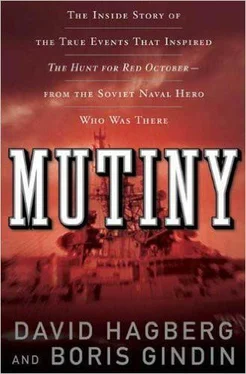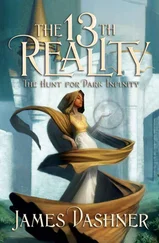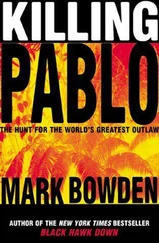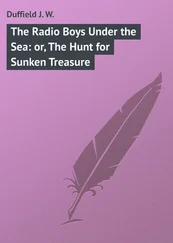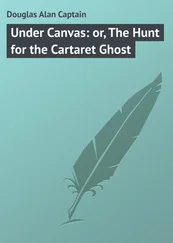On top of that, Russia was becoming a dangerous place for Jews. By the summer of 1988 a lot of them were leaving for the United States, so an ultranationalist group calling itself Pamyat (Remembrance) rose up with the purpose of eliminating all Jews. Not by deportation, but by extermination. It was the old pogroms all over again, which seemed to be a part of the Russian soul.
It was right after that difficult summer that the Gindins finally got their exit visas and in October booked a flight to Vienna, as a waypoint to the United States. Boris’s uncle Vladimir, who had emigrated to the States in 1979, offered to help get them settled once they arrived. The Hebrew Immigrant Aid Society (HIAS), the New York Association for New Americans (NYANA), and the Jewish Agency for Israel, Sohnut, also pitched in to help, because by Western standards the Gindins were poor to the point of destitution.
But before they could actually board the aircraft, the Soviet system took one last swipe at them. All their luggage was searched for contraband, they were patted down to make sure they weren’t hiding something illegal beneath their clothing, and Yana’s engagement ring was confiscated because it was worth more than the 250 rubles allowed to be taken out of the country.
In Vienna they were housed in a big building with ten or fifteen other families who’d left the Soviet Union and were heading either to the United States or to Israel.
“We stayed there for eighteen days, and the city was shocking to us, to see the luxuries in every shop window. It was clean, beautiful, and charming.
“We were free. A huge load had been taken off our shoulders, even though we knew that we’d be facing a lot of new challenges.”
At that point Boris didn’t even speak English.
The Sohnut representative gave them a small amount of money so that they could live until they reached the next stage of their journey in Rome. But their trip almost ended right there, when they showed their handwritten exit visas. No one wanted to believe the documents were real. They had to be forgeries. It was possible that the Gindins were smugglers or thieves or perhaps even wanted for murder back in Russia.
“It took us sixteen hours that day to convince our interrogators that the visas were real, and that it wasn’t our fault they were handwritten.”
The Gindins were finally placed on a train that was to take them to Rome by the next morning, but in the middle of the night the train was stopped out in the countryside, in the middle of nowhere, and all Jews were told to get out with all their belongings.
Terrorists were planning on attacking the train and killing all the Jews.
“Armed soldiers were everywhere,” Gindin says. “We did what we were told to do, and we were taken by bus to a small hotel in Rome where would we have to stay for the first week until we could find an apartment. It would be several months before our U.S. visas arrived, and in the meantime we had to somehow make a life for ourselves.”
In the hotel the HIAS organization fed all the immigrants. It wasn’t much: bread, oatmeal, soup, a small pat of butter, and one piece of fruit three times a day, but it was better than nothing.
The Gindins were interviewed again, and the same question came up: Why are you leaving Russia? This time Gindin hinted that his reasons for getting out had to do with his service in the navy.
It got the attention of the CIA. Gindin wasn’t exactly a superstar, but he was what the Company called a person of interest. Field officers interviewed him several times in Rome and then again in the United States, piecing together not only his military knowledge but also the story of the mutiny.
Rome was a tough three months. The Gindins found a small apartment in the suburb of Santa Marinella, but there was no heat, so at night they slept with all their clothes on.
Among the few things they’d taken out of Russia were some souvenirs, nesting dolls, caviar, and silk and linen sheets, which they’d planned on selling or bartering for food. They took to the streets in Rome’s largest bazaar to peddle their goods so that they could have money for food. What they were doing was illegal without a license, which they couldn’t afford, so they kept on the move from spot to spot, always trying to keep from being noticed by the police.
The biggest worry was their visas. It was at this time that the United States started clamping down on allowing Russian Jews into the country. Every day the Gindins heard stories about other families who’d come out of Russia and been denied entry to the United States. For them the prospects of a bright future was gone.
But in February the long wait was over; the Gindins got their visas and flew to New York, where Uncle Vladimir met them at the airport.
“This is how we started our lives in America,” Gindin remembers, smiling. “I spoke almost no English, and we had only three suitcases of belongings and five hundred dollars in cash.”
He got a job as a mechanic at an elevator company, earning eight bucks an hour. Yana went to school to learn English and another school where she learned bookkeeping, and she got a job.
Eventually they landed nice positions with big companies and bought a small house in Connecticut, a short train ride from Manhattan, and their only child, Vladimir, graduated with a master’s degree in finance.
Only now and again will Boris stop to cock his head and listen for sounds from across the fog-bound Daugava River, smell the chill, damp air that night before the mutiny. Only now and again will he think of the base at Baltiysk and the Storozhevoy and his crewmates, especially Captain Potulniy and Sablin and Firsov and the seamen in his gas turbine section. Only now and again will he relive the mutiny, but then he grins; it’s time to get on with his new life in America.
Eternal Father, strong to save,
Whose arm hath bound the restless wave,
Who bidd’st the mighty ocean deep
Its own appointed limits keep,
Oh, hear us when we cry to Thee
For those in peril on the sea!
A NAVY HYMN
Backous, Douglas D., MD. Temporal Bone Gunshot Wounds. Bobby R. Alford Department of Otolaryngology—Head and Neck Surgery, August 5, 1993.
Barron, John. KGB: The Secret Work of Soviet Agents. Reader’s Digest Press, 1974.
“Battleship Potemkin Uprising.” Wikipedia.org., October 1, 2005.
Bemis, Patricia Ann, RN, CEN. Stab, Gunshot and Penetrating Injury. Nursingceu.com, August 16, 2006.
Chipman, Dr. Donald. “Admiral Gorshkov and the Soviet Navy,” Air University Review, July-August 1982.
“Cranial Gunshot Wounds.” Cornell.edu, August 16, 2006.
Dutton, Denis. “A New Russian Revolution.” The Press, denisdutton.com, May 12, 1990.
“Gunshot Wounds.” Med.utah.edu, “Firearms Tutorial,” 1987.
“HMS Bounty and Pitcairn Island.” lareau.org, “Bounty on the Internet,” April 25, 2006.
“Illuyshin Il-38.” Wikipedia.org, September 19, 2006.
“Inside Brezhnev’s Office.” Time, June 25, 1973.
“KGB, History.” Wikipedia.org, July 18, 2006.
Margolis, Eric. “Remembering Ukraine’s Unknown Holocaust.” Ericmargolis.com, “Archives,” 1998.
Marxist.com. “A Leninist Hero of Our Times: In Memory of Valery Sablin: The True Story of Red October.” January 26, 2006.
Miller, David, and John Jordan, Modern Submarine Warfare. Military Press, 1987.
Miller, David, and Chris Miller. Modern Naval Combat. Crescent Books, 1986.
Moore, Capt. John, RN. ed. Jane’s Warsaw Pact Warships Handbook. Jane’s Publishing Company, 1986.
Читать дальше
